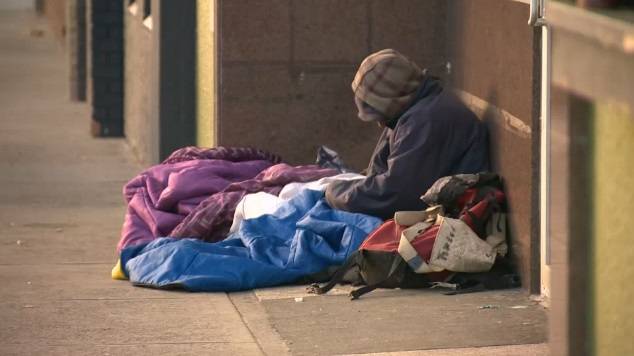Almost one-third of people who are living on the streets are under 18 years of age, according to the Winnipeg Street Census.

A team of volunteers, working in partnership with a wide range of local community agencies, hit the streets in the spring to collect vital information from the homeless for the Winnipeg Street Census, the results of which were released Wednesday morning.
With 1,519 homeless Winnipeggers surveyed over two days in April, the Street Census found 455 homeless people classified as youth or children.
Of those children, 93 of those were under the care of a parent or guardian, and 31 were under 18 living on their own.
More than 85 per cent of youth on the streets reported experiencing mental health distress.
“The Street Census is not an attempt to count the total number of people experiencing homelessness,” said the final report, “but provide a snapshot of who is experiencing homelessness, some of the reasons for it, and barriers to exiting it.”
Of that number, Indigenous people are vastly over-represented on Winnipeg’s streets. More than 65 per cent of those surveyed identified as Indigenous, with 60 per cent of those having come to Winnipeg after growing up in First Nations communities. More than 20 per cent of those had lived in Winnipeg for a 18 months or less.

Get weekly health news
More than half of the Indigenous people surveyed also said they’d spent time in the care of Child and Family Services.
“One person talked about their experience moving from their home reserve to Winnipeg for high school,” said a volunteer surveyor.
“They moved in with a family and then moved around to different families. They talked about being homeless for a few weeks in between each home. They described how much harder it is to do school if you are homeless.”
Only 4.9 per cent of the overall survey group said they had come to Canada as immigrants or refugees, which the census report credits to positive strides taken by settlement agencies and cultural communities to settle in Winnipeg.
It acknowledged, however, many newcomers may have been missed by the census due to differing cultural views on homelessness among other factors.
The census results indicate that Winnipeg’s homeless are overwhelmingly male, with the 50+ age group making up over 20 per cent.
There are differing degrees of homelessness as well. The vast majority of those surveyed fall into the ‘provisionally sheltered’ category – people staying in short-term transitional housing, institutional care, a hotel/motel, or temporarily staying with someone else.
A further 392 people were staying at emergency shelters, while 204 were completely unsheltered.
The Street Census outlined a number of potential strategies to improve the outlook for Winnipeg’s homeless population, including setting up better support systems for Indigenous people transitioning from reserves to the city, as well as recommendations for increasing the supply of affordable housing and increasing financial assistance levels.
WATCH: State of homelessness in Winnipeg













Comments